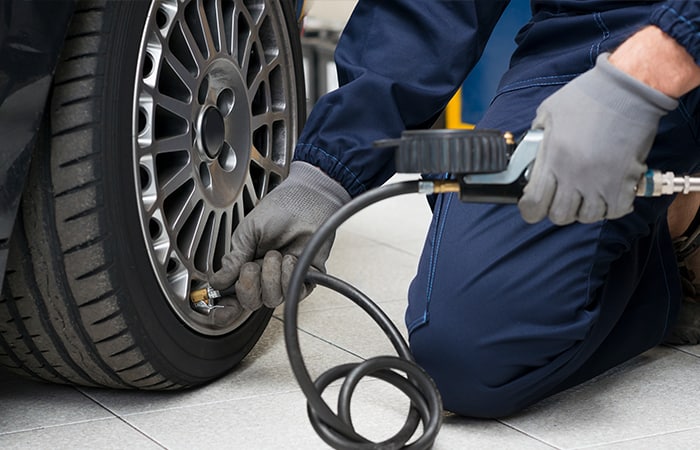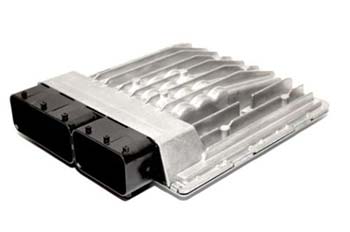Given that they are always in contact with the road, tyres are a crucial component of a car. Your tyres endure a lot as they are constantly in contact with friction. Surprisingly, a lot of automobile owners neglect to pay attention to this crucial component of how to check tyre pressure.

Tyre pressure should be closely monitored while switching from one MOT to another service appointment to prevent breakdowns and mishaps. Additionally, a neglected tyre can burn a hole in your wallet. To offer you a clear image, we will cover how to check tyre pressure in this post, along with everything else linked to it. Let’s get going.
What is tyre pressure?
Simply explained, the pressure is produced by the air within the tyre, thus the name “tyre pressure.” The pressure lowers along with the air loss as you continue to use the tyre. More of the tire’s rubber portion comes into touch with the road as a result.
If you continue to drive your car with low tyre pressure, it might deteriorate further, causing the tyre to wear out and possibly impair your car’s handling and grip. Additionally, because the engines will have to work harder to overcome the resistance of the tyres, there will be an increase in fuel consumption. Your tyres will begin to lose air over time, making driving on the road extremely risky.
Importance of Tyre Pressure
Tyre pressure is crucial since it influences several other variables and supports the entire vehicle’s weight. Your car’s tyres lose a little air each month as you drive, necessitating a routine inspection.
The performance of the tyres as a whole has an impact on the vehicle’s critical handling, safety features, braking effectiveness, accuracy, and comfort while driving. Additionally, it increases your fuel bill because the car has to work harder to overcome the increased resistance of the road. This also results in lower fuel efficiency.
Your fuel efficiency will increase by 3% with tyres that are inflated correctly and precisely! That ought to pique your interest now.
How do I check the tyre pressure?
It’s not very difficult to check the tyre pressure. You don’t need to be an expert in the vehicle sector or be familiar with all the technical terms. The only advice you should have in mind before beginning the procedure is to use a pressure gauge that measures pressure using the same unit as the car’s instructions. These recommendations can be found in the user handbook or on a label that is affixed to your car’s bodywork.
Start the procedure once you are ready.
- The valve dust cap that is located on the tyre valve must first be removed in order to verify the tyre pressure. Instead, set the pressure gauge on the stem of the tyre valve.
- For an accurate reading, make sure you’re applying uniform pressure on the gauge.
- Determine whether you need to inflate or deflate your tyres based on the pressure gauge reading.
- If it’s under-inflated, use a pump to add a little air and inflate it if necessary, being careful not to overdo it.
- Use a flat-head screwdriver to exert some force on the metal pin on the valve stem if deflation is difficult. The air will be released thanks to this.
- Use the pressure gauge to monitor the pressure regularly and accurately while you watch the inflation and deflation process.
- Check the spare tyre as well as the other four tyres as a precaution.
Tyre Pressure – The Correct Measurement
Let me explain the tyre pressure measuring mechanism to you if you’re unclear about it. There are two different units of measurement: the bar (metric) and pounds per square inch, or PSI (Imperial).
Both of these are mentioned for easy understanding in your car’s handbook or manual or on the sticker on the bodywork of your car. For conversion purposes, 1 bar equals 14.5 PSI.
When should I check the pressure in my tyres?
To avoid driving with the wrong pressure, you should ideally check your tyres’ pressure once every month. Try to check the tyre pressure before you start the day on cold tyres if you’re seeking for the ideal time to do so. This is advised since tyres that have been driven on when warm or hot could not provide the right reading.
What should my tyre pressure be?
After how to check tyre pressure, this is the question that gets asked the most. Your car’s bodywork often has a label, typically on the inside of the door, that informs you of the precise tyre pressure for each of your tyres. If you still can’t find it, you may always refer to the manual or the manufacturer’s guide.
Frequently asked questions regarding tyre pressure
1- Why is it important to maintain the correct tyre pressure?
Maintaining the correct tyre pressure is important for several reasons. Firstly, it improves the safety of your vehicle by ensuring that your tyres have sufficient grip on the road. Secondly, it helps to improve fuel efficiency, as underinflated tyres can cause your vehicle to use more fuel than necessary. Finally, it can extend the life of your tyres by reducing wear and tear.
2- How do I check my tyre pressure?
To check your tyre pressure, you will need a tyre pressure gauge. Simply remove the valve cap from the tyre, press the gauge onto the valve stem, and take a reading of the pressure. The correct pressure for your tyres can be found in your vehicle’s owner manual or on a sticker inside the driver’s side door.
3- How often should I check my tyre pressure?
It is recommended to check your tyre pressure at least once a month, or before any long trips. Changes in temperature can also affect tyre pressure, so it is a good idea to check your tyre pressure more frequently during extreme weather conditions.
4- What should I do if my tyre pressure is too low or too high?
If your tyre pressure is too low, you should add air to your tyres until they reach the recommended pressure. If your tyre pressure is too high, you should release some air until they reach the recommended pressure. Overinflated tyres can be just as dangerous as underinflated tyres, so it is important to always maintain the correct pressure.
5- Can tyre pressure affect my vehicle’s handling?
Yes, tyre pressure can affect your vehicle’s handling. Underinflated tyres can cause your vehicle to feel sluggish and unresponsive, while overinflated tyres can make your vehicle feel unstable and harder to control. Maintaining the correct tyre pressure can help to ensure that your vehicle handles as it should.
6- How can I tell if my tyres are underinflated or overinflated?
An underinflated tyre will appear flatter and may have a bulge at the bottom of the tyre. Overinflated tyres will appear more rounded and may have a bulge at the top of the tyre. However, the best way to tell if your tyres are underinflated or overinflated is to use a tyre pressure gauge to check the pressure.
This concludes our blog post on how to check tyre pressure. Hope this was of some use. Please feel free to comment below with any questions or doubts you may have. To read what other factors effect your tyre’s health read How Potholes Affect Your Vehicle And How To Avoid Them


